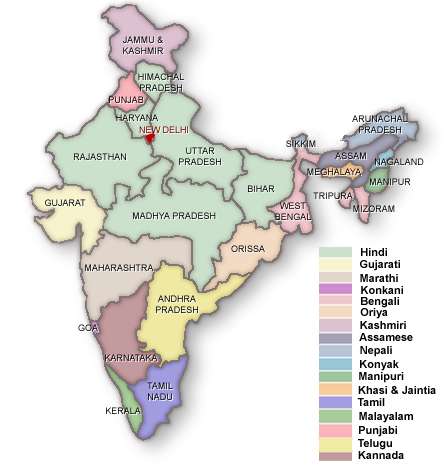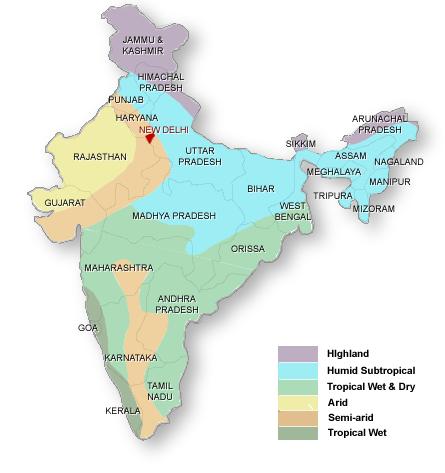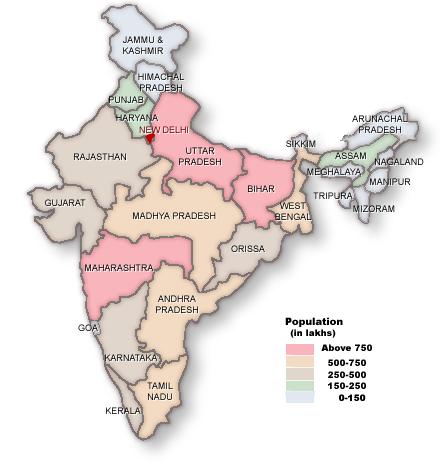

INDIA
India's Statistics
|
Capital |
New Delhi
|
|
Population |
953 Million (as per 1995 census)
|
|
Religion |
Islam, Hinduism, Christianity, Buddhism, Sikhism, Jainism and other
|
|
Area |
3,287,263 Sq. Km
|
|
Currency |
Indian Rupees ( 1 Re. = 100 Paise)
|
|
Language |
Hindi, English, Urdu, Telegu, Marathi, Punjabi, Banglali, and other regional languages
|
India's Language Map

India's Climate Mape

India's Population Map

| National Animal | |
|
| National Bird | |
|
| National Embelm | |
|
| National Flag (Tiranga) | |
|
| National Flower | |
|
|
|||
| National Tree | |||
|
| National Anthem: Janaganamana | ||
|
| National Song: Vande Mataram | ||
|
| Indian Geography | |
|
|
|
Seasons |
|||||||
|